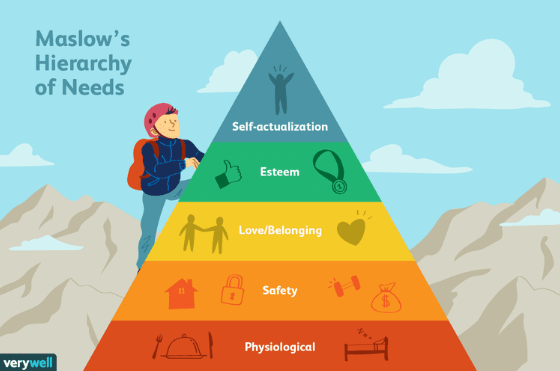6 Ways to Improve Motivation in the Workplace
Boost employee engagement with these six strategies for fostering intrinsic motivation in the workplace.
by Kathleen O'Donnell - June 2nd, 2023
Ever had one of those workdays where you just can’t seem to get anything done? Instead of tackling your to-do list, you’re daydreaming about dinner tonight, your plans for the weekend, or your next big trip. It can feel like pulling teeth to get anything accomplished on those off days — and that’s because your motivation has temporarily deserted you.
In many cases, your work environment has a whole lot to do with your motivation levels, and it’s possible to build a more motivated workforce in your organization. To do so, you just need to understand what motivates people. (Hint: it’s not just about paying people more.)
Why is Motivation So Important in the Workplace?
Do you want employees who have to summon all their willpower to get their daily tasks done or ones who come to their desks every day with energy and excitement for their work? Of course, this is an easy choice — but getting employees to that second highly engaged state means increasing workplace motivation, and that’s no easy task.
It’s important to distinguish the two major types of motivation when you’re working out how to motivate employees better. Extrinsic motivation is driven by external factors such as monetary rewards — salary, bonuses, and benefits — or status. While it works in the short term, this isn’t the most effective type of workplace motivation because the thrill of the external reward fades, as anyone with a highly-paid but draining job can tell you.
Intrinsic motivation, on the other hand, comes from internal rewards, such as doing something for the sake of your own personal growth, knowledge, or interest. This type of motivation is longer-lasting because it’s personally rewarding and not reliant on outside awards or praise — and this is how you get employees to be self-motivated and engaged.
What are the Major Motivation Theories?
Understanding a few key theories about what motivates most people can help you develop a better workplace motivation strategy. Here are the three most influential theories of motivation.
Maslow’s Hierarchy of Needs
Abraham Maslow introduced his theory on the pyramid of human needs in 1943. Our most critical needs are physiological, like sleep and food, followed by safety, love and belonging, and esteem. At the top is self-actualization — self-esteem and feelings of accomplishment, which come from within, much like intrinsic motivation.

image source: https://www.verywellmind.com/what-is-maslows-hierarchy-of-needs-4136760
McClelland’s Theory of Needs
David McClelland built on Maslow’s theory to identify the three main motivators we all have: the need for achievement, affiliation, and power. While everyone experiences all three motivators, we each have one that is more powerful than the other two — tapping into the driving motivator can yield big results.
The Hawthorne Effect
The Hawthorne Effect hypothesizes that people feel more motivated to perform well when they know someone is observing or studying them. When they feel their leaders or managers are paying them special attention or focusing on their needs, employees may feel more motivated and perform at a higher level in response to this attention. They may stop feeling motivated when that extrinsic attention fades.
6 Ways to Foster Intrinsic Motivation in Employees
These three theories of motivation can give us some potential ways to increase workplace motivation in theory, but turning them into tangible policies is another matter. Here are the best action steps to foster intrinsic motivation in your people and increase employee engagement along the way.
1. Deliver the Right Kind of Employee Feedback
You may already think you’re delivering enough feedback to employees with annual performance reviews and the occasional “great job!” offhand comment — but that kind of sporadic and non-specific feedback isn’t very motivating to employees. It’s too vague to offer satisfaction or guidance.
Instead, try delivering more regular feedback in the moment, such as after a presentation or at the end of a project. Be sure to make your feedback more specific, whether praising their preparation and communication or asking them to work harder on meeting deadlines next time.
When feedback is timely and clear, employees know exactly what they need to do to shine, and that clarity is motivating.
2. Recognize Regularly and in All Directions,
Feedback and recognition go hand-in-hand when you’re trying to increase workplace motivation. In fact, 77% of employees say they would work harder if they were recognized. This need for recognition isn’t about getting a gold star for doing their jobs but about how employees need their hard work to be seen and valued.
Managers are not the end-all-be-all of recognition — it’s also motivating for peers, colleagues, and high-level leaders to recognize great work. Plus, when people see that their leaders pay attention to excellent work and positive outcomes, they’re more motivated to deliver great results themselves because they know it will likely be appreciated.
3. Set Meaningful Goals
Employees won’t always feel motivated and energized when tackling their daily to-do list of essential tasks. But connecting those tasks to something larger, like a meaningful contribution towards the organization’s long-term vision, can deepen their engagement in those tasks and increase their motivation.
Motivate employees by showing them how their work makes a difference to your customers or clients, their colleagues, and the organization by helping them set meaningful goals. Instead of focusing on their daily output, encourage employees at every level to set goals that connect what they do every day to the bigger picture.
4. Give Employees Autonomy
Autonomy, together with mastery and purpose, drives workplace motivation. And nothing kills motivation faster than feeling like a small child at school who needs to be told what to do, how to do it, and when to get it done. The people you’ve taken such care to hire are experienced professionals, so treat them like it – and watch them flourish.
Giving employees more autonomy means less micromanaging of their work, certainly. But their daily tasks aren’t the only places they crave autonomy — letting them have more control over when, where, and how they work, where possible, is essential as well.
While micromanaging can temporarily increase their extrinsic motivation as they try to avoid criticism, it can quickly lead to burnout. Increased autonomy motivates them to pursue excellence because it’s meaningful to them.
5. Connect and Communicate
Social connections and trust are important components in workplace motivation and employee engagement. Feeling like a small, unimportant cog in a large and impersonal machine isn’t motivating — but feeling a sense of belonging and purpose and camaraderie is, for both in-office and remote employees.
Building those connections takes time, effort, and a lot of open and authentic communication. And those bonds (just like feedback) aren’t only between managers and direct reports, but are also between peers and colleagues. In fact, up to 70% of workers say that workplace friendships are crucial to their happiness — and motivating unhappy workers is no easy task.
Connecting leaders with employees at all levels is critical as well. Opening up lines of internal communication can help employees feel connected to the organization’s mission and the leaders putting that mission into action.
6. Act With Integrity and Honesty
But creating those connections between leadership and employees isn’t effective if communication is inauthentic (or worse, dishonest). Of course, leaders typically don’t mean to make promises they can’t keep, but if it happens regularly, employees will start to distrust what they hear from their leaders.
That growing distrust harms motivation levels as well. Employees aren’t motivated to perform at their best if they don’t feel leaders keep their word and look out for their best interests. On the other hand, acting with honesty and integrity affirms to employees that their workplace will do right by them if they put forth their best effort.
Final Thoughts
Highly motivated employees are the secret weapon in the battle to build a successful business. These six suggestions should help you build a more motivated workforce while keeping employees satisfied and engaged at the same time.
Want a better way to manage employee performance so you can measure improvements in engagement and motivation effectively? Take a tour of GoCo and see the difference an all-in-one solution can make for your HR team today!
Recommended Posts
How HR Can Think Like a Marketer: Engagement
Blog Articles
22 Employee Engagement Ideas That Remote Workers Love
Blog Articles
35+ Employee Engagement Survey Questions You Must Ask
Blog Articles
Search...
Product
GoCo
Resources
Articles
eBooks
Webinars
Customer Stories



